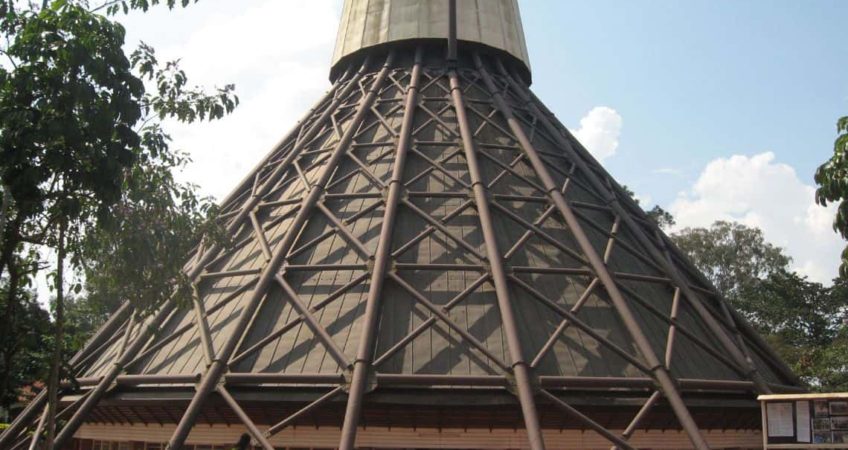So how did Namugongo come to be a celebrated place? On 3 June 1886, 32 young men, pages of the court of King Mwanga II of Buganda, were burned to death at Namugongo for their refusal to renounce Christianity. They were Anglican and Catholic. Annually on 3 June, Christians from Uganda and other parts of the world congregate at Namugongo to commemorate the lives and religious beliefs of the Uganda Martyrs.
The Namugongo Shrines were first recognised by Joshua Serufusa-Zake (1884–25 June 1985) when he was the Sabaddu of Kira Sub-County. He constructed a structure at the Namugongo site, where shrines were built later for prayer.
Churches are in areas where martyrs were killed, and they are also honored on churches’ murals and stain glasses. The most prominent shrine is Namugongo which is located where St. Charles Lwanga and his companions were burned.
Every element of this area speaks of these young courageous boys who have today become important persons in the Christian faith. Thousands of people not only flock this place on 3rd June but even on other days throughout the year to ask these saint to intercede for them in their tribulations.
Many pilgrims come from Kenya, Rwanda, Tanzania, and all over Uganda to take part in the Ugandan Martyr’s Feast Day at Namugongo, and many others follow the celebration on national television.
This catholic mini basilica, an honor given in the Catholic Church, is dedicated to the men and young boys who unselfishly died for their newly found faith. The beautiful and unique catchy interior has made the shrine notably popular. Whereas it’s exterior, shape and general architectural art is awesome, the basilica is built with the inspiration of the African huts and supported by 22 copper domes with the doors to the church expressing the history and lives of the martyrs.
The mill hill missionaries in 1935, 49 years after the holocaust, Catholic Parish at Namugongo. They dedicated it to Our Lady Queen of the Martyrs. 32 years later, the building of this historical church was commenced. The palace was notorious for the imprisonment and execution of any kingdom offenders I the Buganda Kingdom. It is here that the 22 known Uganda martyrs were reduced to ashes and it is where they are remembered every year on 3rd June.
On 6th June 1920 the martyrs were beatified by Pope Benedict XV which saw their canonization as saints by Pope Paul VI on Mission Sunday, 8th October, 1964 in Saint Peter’s Basilica, Rome and furthered honored them with a pilgrimage becoming the first pope to visit the African continent on 31st July to 2nd August 1969.
In memory of Charles Lwanga’s work as a page and leader in the making of the Kabaka’s lake, a martyrs’ lake was dug and today serves holy water to many faithfuls in hope of miracles.
In the middle of this lake is an island with unique clear views from all angles of this 15 acre property. This is where the main celebrant’s normally precede over mass on big days like 3rd June. The circular grass thatched pavilion can accommodate about 300 clergy
Decades following the massacre of the twenty two young men by King Mwanga in 1886 for failure of denouncing their faith, the shrine has become more than just a place of religious pilgrimage – but also a centre of attraction. It is a true blessing for them because God has honored them in this way.

